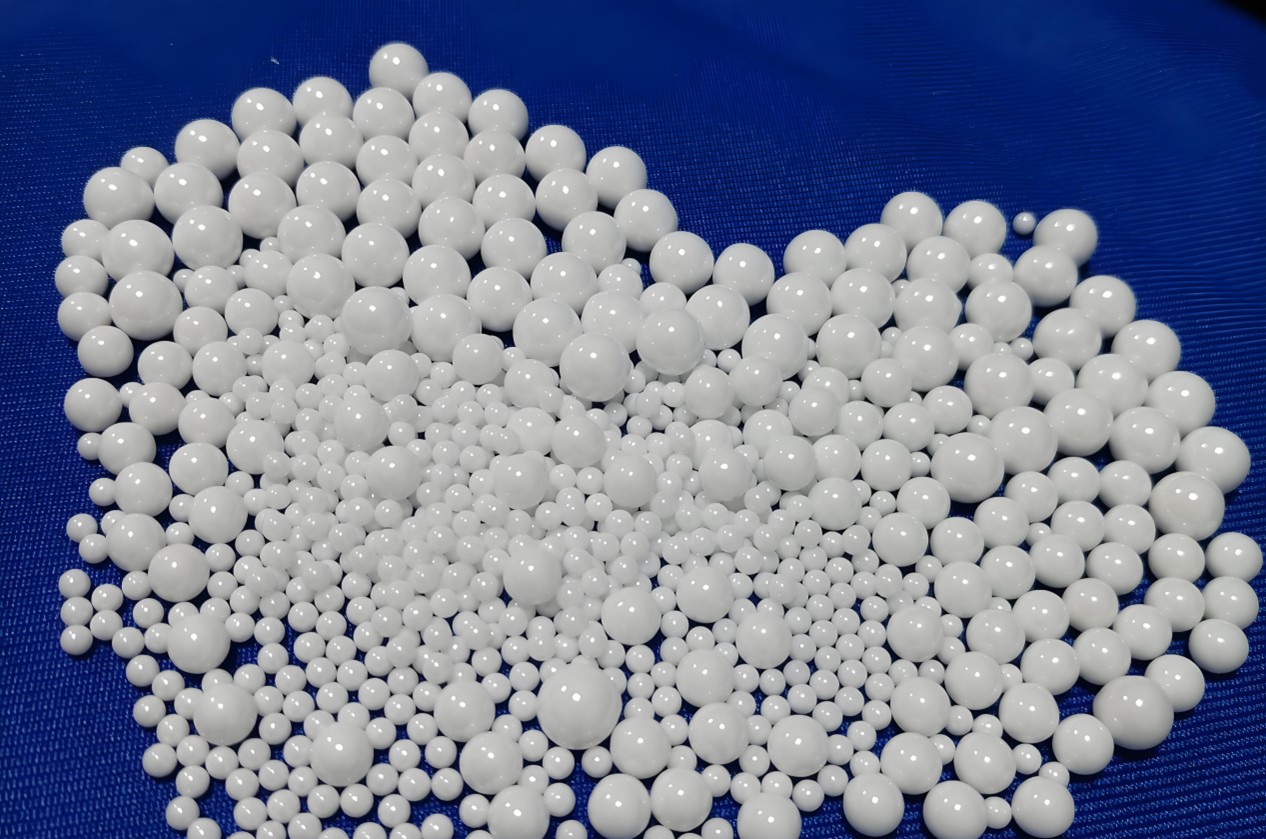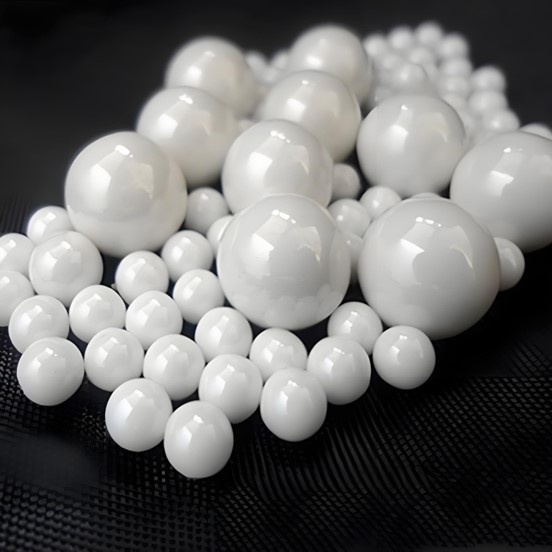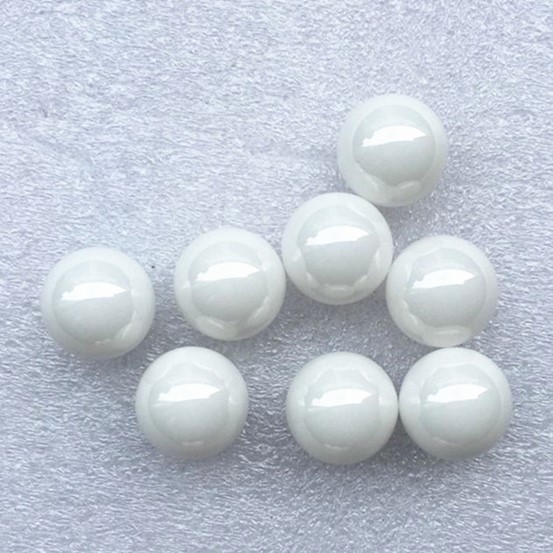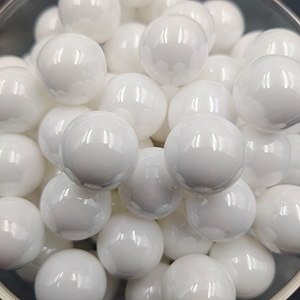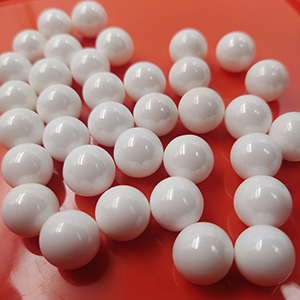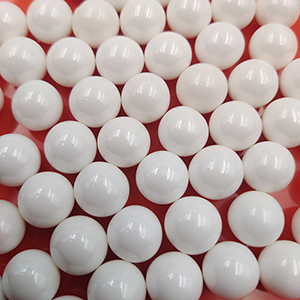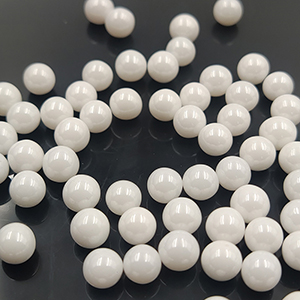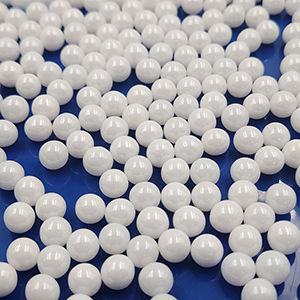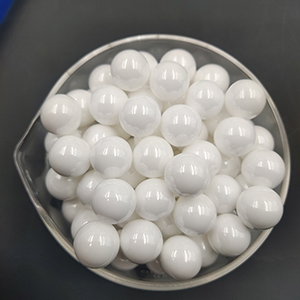What is the production process of Zirconia ball
Zirconia Balls have a variety of production processes, titration, rolling forming, pressing and other methods, most of them are rolling forming methods, first grinding zirconia powder, and then molding, and then firing, some also have a screen to ensure that the size range qualified, and then screen out the sphericity of the ball, and finally packaging and shipping
The production process of zirconia balls mainly includes the following key links, combining different forming methods and sintering technology to achieve the manufacture of high-performance products:
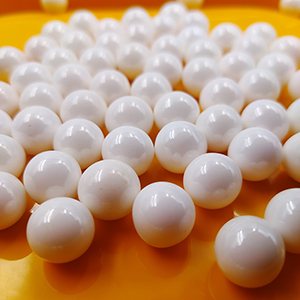
First, raw material preparation and powder treatment
Selection of raw materials: high purity zirconia powder (purity ≥99.9%), and add stabilizer (such as yttrium oxide, cerium oxide) to inhibit phase change, improve high temperature resistance and mechanical properties.
Powder mixing: Through ball milling mixing for more than 24 hours, to ensure the uniform distribution of powder and stabilizer, grinding aid, improve the consistency of subsequent molding.
Granulation process: wet granulation (binder + water) is used to make particles with uniform particle size, which is easy to form and sintering.
Second, molding process
Press forming: Suitable for large size spheres (such as diameter > 10mm), through dry pressing or cold isostatic pressing (pressure 200-250MPa), to obtain high density body.
Injection molding: Used for high-precision small size sphere, powder and binder mixed into the mold, molding pressure 80-120MPa, accuracy of ±0.005mm.
Rolling into a ball: through the mud section or powder rolling, the production of 0.1-60mm ball, low cost but need to control the sintering temperature to avoid abnormal grain growth.
Pellet: Used for ultrafine zirconia balls (0.05-0.5mm), sintered at low temperature (1200℃) after titration, grain size of about 150nm.
Third, sintering process
Sintering temperature: Usually 1400-1600 ° C, yttrium stabilized (YSZ) requires a higher temperature (1550-1700 ° C) to form a dense structure.
Sintering curve: pre-burning (600℃ holding) and densification stage, temperature rise rate 2-3℃/min, holding time 2-4 hours.
Post-treatment: Some products need hot isostatic pressing (HIP) treatment (1350-1400℃, 150-200MPa), the final density ≥99% of the theoretical value.
Fourth, post-processing and finishing
Cutting and grinding: Using CNC cutting machine (accuracy ±0.005mm) and 400-1000 mesh abrasives to ensure size and surface finish.
Polishing and testing: After 1000 mesh polishing liquid treatment, surface roughness Ra≤0.1μm, and density, grain size detection.
Fifth, classification and performance characteristics
Zirconia balls are divided into:
Yttrium stable (95 zirconium) : strong acid and alkali resistance, suitable for sand mill;
Cerium stable (80 zirconium) : high density, suitable for polishing;
Zirconium silicate balls: Low cost, suitable for low corrosion scenarios.
Sum up
The production process of zirconia balls needs to choose the molding and sintering plan according to the product size and performance requirements, the large-size balls are preferred to use isostatic pressing and high temperature sintering, and the tiny balls rely on the drop method. Through strict quality control (such as powder purity, sintering curve), high density and low wear zirconia balls can be produced, which are widely used in grinding, biomedical and other fields.

